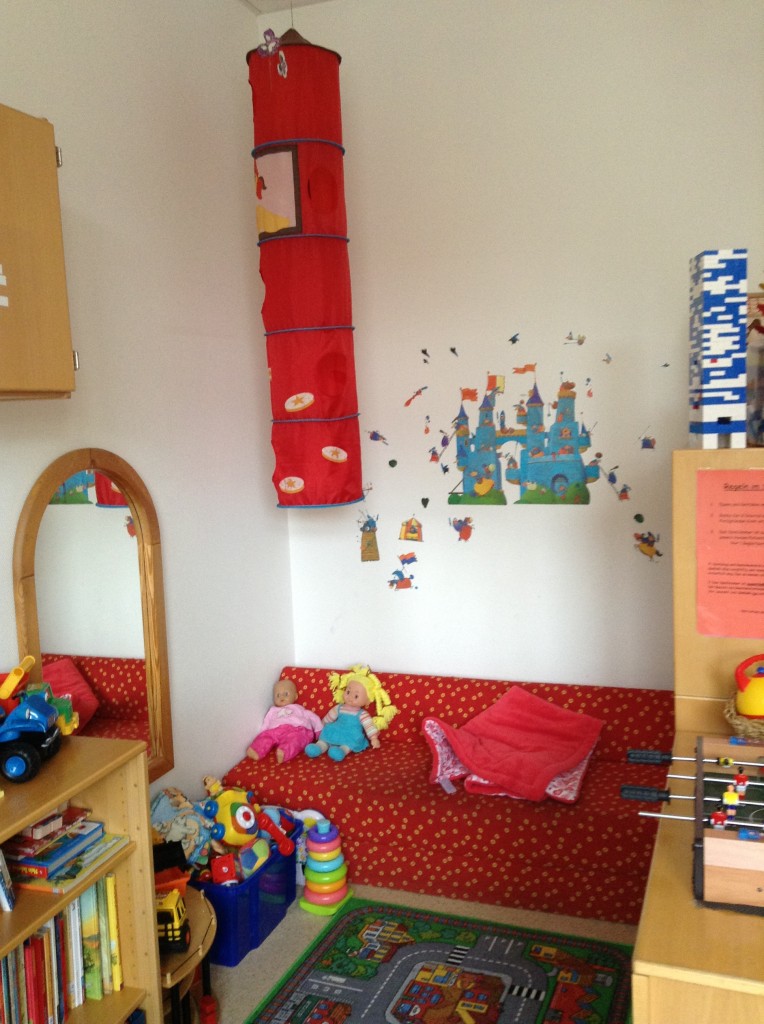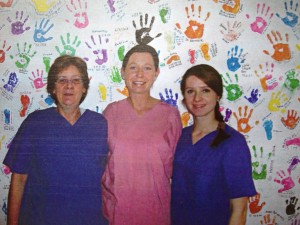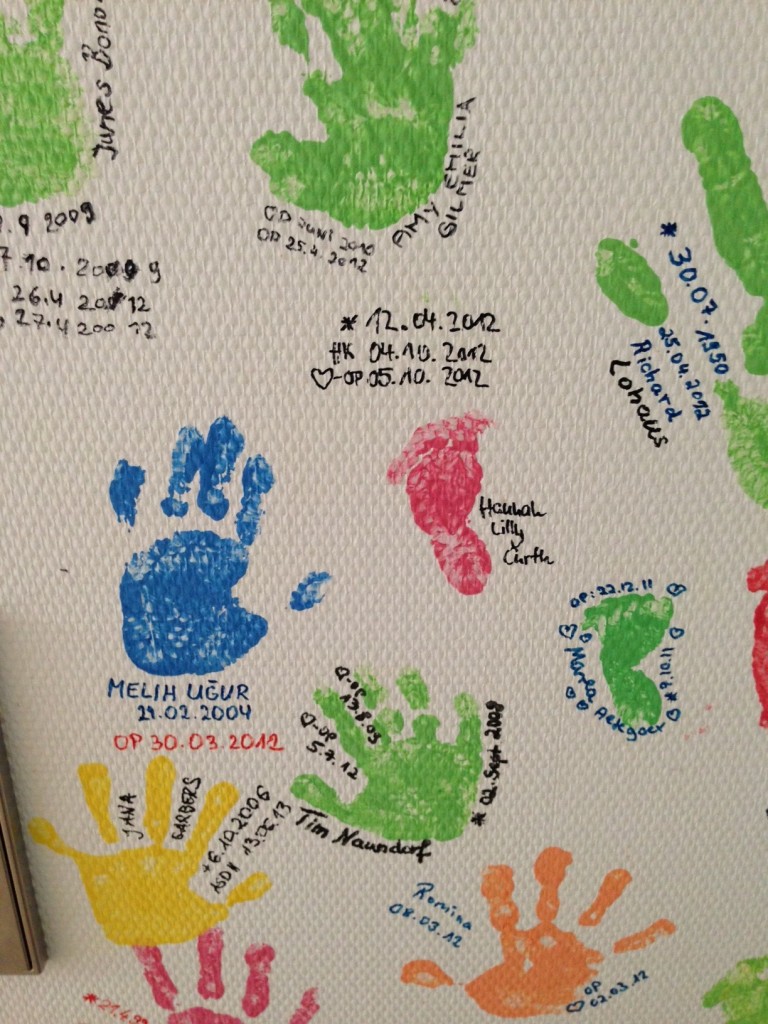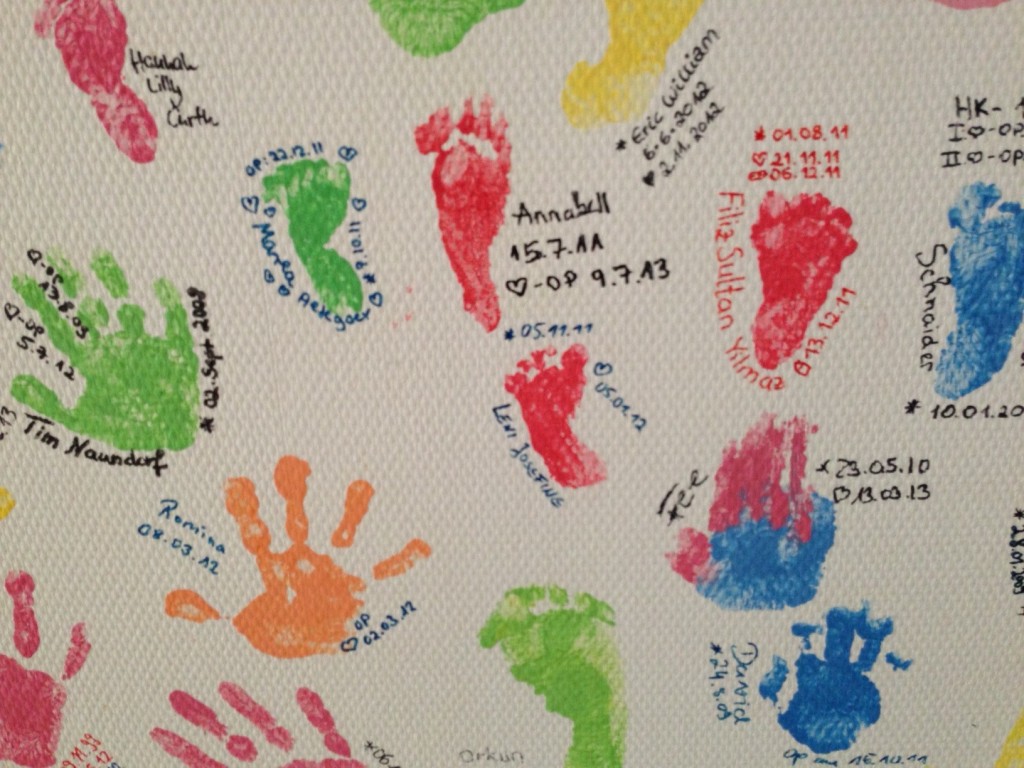Giessen, Germany: Memories flood back to me when I enter the cardiology clinic section for children in Giessen, Germany. Just nine years ago, my baby daughter was a patient here. She was born with a heart defect and had surgery at just six months of age. I was very fearful for my little girl, during my stay at the hospital for three, long, exhausting weeks. Thankfully, there was no limit to the visiting hours so my husband could visit us. My daughter is alive and well today and I am thankful to the fantastic medical doctors who are always busy healing the little ones physically.
However, one point must not go unnoticed. While doctors may heal children physically, the little children are very troubled and full of fear during their stay in the hospital. True, in Germany and from a medical perspective, the children are in the best hands here. The hospital in Giessen has a great reputation of performing outstanding cardiac surgeries and is well known for using the latest technologies to diagnose and treat cardiac arrhythmias,[1] use catheters to insert stents, balloons and for diagnostic purposes.
Every year, around 6000 children are born with a heart defect or heart malfunction in Germany, out of which 80% of these children need to undergo surgery.[2] Every year, 8-10 heart transplants are performed on children in Giessen alone.[2] Hypoplastic left heart syndrome (a defect were the left part of the heart is underdeveloped) and dilated cardiomyopathy (a condition in which the heart becomes weak and enlarged) are the most common reasons for heart transplants.[3]

This cozy corner is also part of the nursery room where recuperating children indulge in bit of art therapy.
The retreat room
It is, therefore, such a great thing that while children stay in the hospital, they have a beautifully and tastefully decorated room, the ‘retreat,’ where they can indulge in art and craft activities. Nursery teachers give instructions on how to do crafts and tell them fascinating stories. It is only the sight of IV drips attached to children’s arms that reminds me that I am in the cardiology ward of a hospital.
One of the nursery teachers, Siegreid Siegfried, says, “The retreat room is like an oasis in the middle of the hospital routine. The children enjoy painting, being creative, and feeling special. They need the support and comfort and we are here to give them that.†The nursery teachers are paid by the organization Kinderherzen-heilen, founded by parents of children with heart problems to support each other. This is because the medical system in Germany does not provide for this kind of non-medical related support.

Always ready to help! Siegried Siegfried (nursery teacher), Agnes Muench (nurse) and Ludmilla Mauer(nursery teacher)from the children’s cardiology ward in Giessen, Germany (from left to right).
Adding meaning to parents’ lives.
The support offered by the nursery teachers at the hospital mean a lot to the parents. Worries, fear, and uncertainty drain the energy of parents when their children are undergoing surgery. Showing constantly joy and strength in front of the children, parents are allowed to feel their vulnerability and tiredness in front of the nursery teachers. Some parents start painting alongside their children, finding new artistic ways to cope with their worries. It reminds me of the time when I was staying with my little girl at the hospital. I took the opportunity to forge bonds with the nursery teachers while undertaking a bit of craft and art activity to calm me down. Thanks to the nursery teachers, I felt ‘understood.’
Painted foot prints long gone
The long wall in the hallway is full of painted version of handprints and footprints which were left by the many little patients going home. The prints are witnesses of their success story. Siegried tells me that many children love to visit the nursery teachers and say hello. “It is a privilege to work here,†she says, “The little ones are always excited when they find the prints that they left behind still gracing the wall.â€
My daughter’s little foot prints have long been covered with new layers of paint and, I believe, new prints of hope. I smile when I leave the cardiology section for the children, because I know that the success stories will continue, and the concept of caring about the little hearts and the little souls through art therapy, is definitely working.
—-
My thanks goes to Siegried Siegfried for taking time to have an inspirational conversation with me. I also want to thank Kinderherzen-heilen (www.kinderherzen-heilen.de) for providing further helpful information.
—-
Ilka Emig is a contributor to Travel Arts Life – your blog on making a difference through creative arts therapy and other life-worthy iniatives. She is German and a mother of two. She is a musician and is passionate about writing on issues around children. She currently lives in Abu Dhabi.
REFERENCES
[1] Defined as any kind of an abnormal cardiac rate or rhythm
[2] Source www.kinderherzen-heilen.com
And here questions of type such if honestly strike me not much as I wrote everything higher. It is visible you simply you don’t want to read all this. As my parrot does.



That’s a wonderful way to help take the children’s minds off their illnesses. It’s a fantastic job that the nursery teachers are doing.